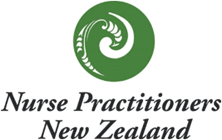Alison Stewart-Piere NP, Clinical Lead for Southern Regional Sexual Health Service.
I graduated as a RN from Fremantle Hospital in Western Australia. I then worked as a welder and mechanic in Alaska and long haul truck driver in USA before returning to nursing, two years later, working in paediatrics in Northern Canada. Working with congenital defects and childhood cancers when pregnant frightened me out of nursing for six years.
On my return to nursing, I worked for Planned Parenthood in USA and discovered that working with healthy people is really satisfying. At this point I was introduced to the Nurse Practitioner role.
We moved to NZ in 1999 and I worked in Family Planning, Elderly Care, Sexual Health and Primary Care. I also taught communication skills to medical and dental students, and lectured on sexual function and dysfunction.
I took a role as charge nurse for nine months, hated it, and returned to Sexual Health.
I became frustrated with the limitations on the RN role, needing a doctor to allow me to do what I knew needed done, so started post graduate study.
I registered as a NP in 2014 and was given a NP role seven months later.
When agreeing to take on the clinical lead role, I identified my learning need in genital dermatology and as a result, have just returned from three months intensive learning in dermatology services in the UK.
Abstract:
Title: Management of common genital dermatoses
I was privileged to be sent to the UK for a 3 month sabbatical to upskill myself in common and uncommon genital dermatoses. By observing in public dermatology services in the UK, I was able to take advantage of the large and diverse population, to see many of the more rare conditions that we see once or twice a year in NZ, to see how they present in multiple different skin colours, and to learn how different cultural practices impact patient presentations and outcomes.
Conditions such as contact allergic eczema and atopic eczema affecting the genitals can be difficult to differentiate from candidal vaginitis and delays in diagnosis cause dramatic morbidity for the affected person. Lichen Sclerosis is generally fairly well recognised in females but males often go many years undiagnosed and endure unnecessary surgical procedures due to misdiagnosis.
Many dermatological issues in the genital area are exacerbated by personal hygeine products, so awareness of cultural expectations for genital hygeine and finding ways to negotiate between individual skin problems and cultural requirements is necessary to assist management of symptoms.
My knowledge of these topics, and much more, was greatly improved during this experience and I would like to pass some of my learning on to my NP colleagues
References:
Rosato, E., Giovannetti, A., Rossi, C., Menghi, G., Pisarri, S., & Salsano, F. (2009). Recurrent infections in patients with nickel allergic hypersensitivity.
Journal of Biological regulators and homeostatic agents. 23(3), 173-80.
Pichardo-Geisinger, R. (2017). Atopic and contact dermatitis of the vulva. Obstetric and Gynecological Clinics of North America. 44(3), 371-378. doi: 10.1016/j.ogc.2017.05.003.
Yale, K., Awosika, O., Rengifo-Pardo, M., & Ehrlich, A. (2018). Genital allergic contact dermatitis. Dermatitis 29(3), 112-119. doi: 10.1097/DER.0000000000000371.
 Menu
Menu
